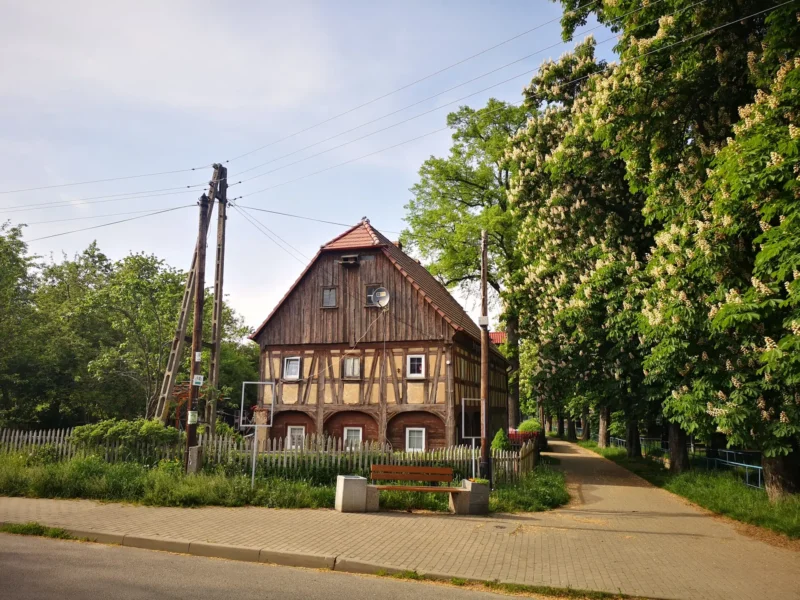
Not only the residents of Bogatynia itself feel uncertain about what will happen to them.
Less than five kilometers further southeast lies Opolno-Zdrój, literally, Opolno Resort. Nowadays, this name serves as no more than a reminder of the glory years in the 19th-20th centuries, when the village, located not far from the mountains, was a health resort. A rather local one, receiving no more than a thousand visitors per year, but nevertheless elegant and cosy. To this day, when you walk along the chestnut avenue, it’s easy to imagine well-dressed guests coming to the Lindenhof and Rudelsburg guesthouses for treatments and therapeutic baths.
Read previous chapters of the story:
In any other place in Poland, trees like those growing in Opolno in front of the local neo-Gothic church would be legally preserved as natural monuments. Perhaps the post-German spa architecture could be restored and preserved as well.
But Opolno’s fate has been sealed for several decades.
First, coal mining robbed the local waters of their healing properties. When the builders of the growing power plant and newly arriving miners were installed in the former spa houses, there was no trace left of the resort. The mine’s development plans leave no illusions: at the final stage of mining, the open pit will expand, literally consuming this village, just as it previously caused the disparition Rybarzowice, most of Zatonie and of Turoszów.
In Opolno, no one wants to talk to us openly. In everyone’s family here, there’s someone who works in a mine. If not in a mine, then in a power plant. What if this person gets in trouble if a relative complains to journalists about PGE? One of those who agree to talk anonymously is a married couple who bought one of the resort houses. A glance at its unusual architecture was enough for them to fall in love with the place. The pair explains to us which road we should take to reach the Czech Republic, and which road leads towards the mine, where we are sure to bump into security guards if we get too close and take pictures. We are careful. We only photograph the panoramic view of the power plant, which looms on the horizon above the rapeseed fields.
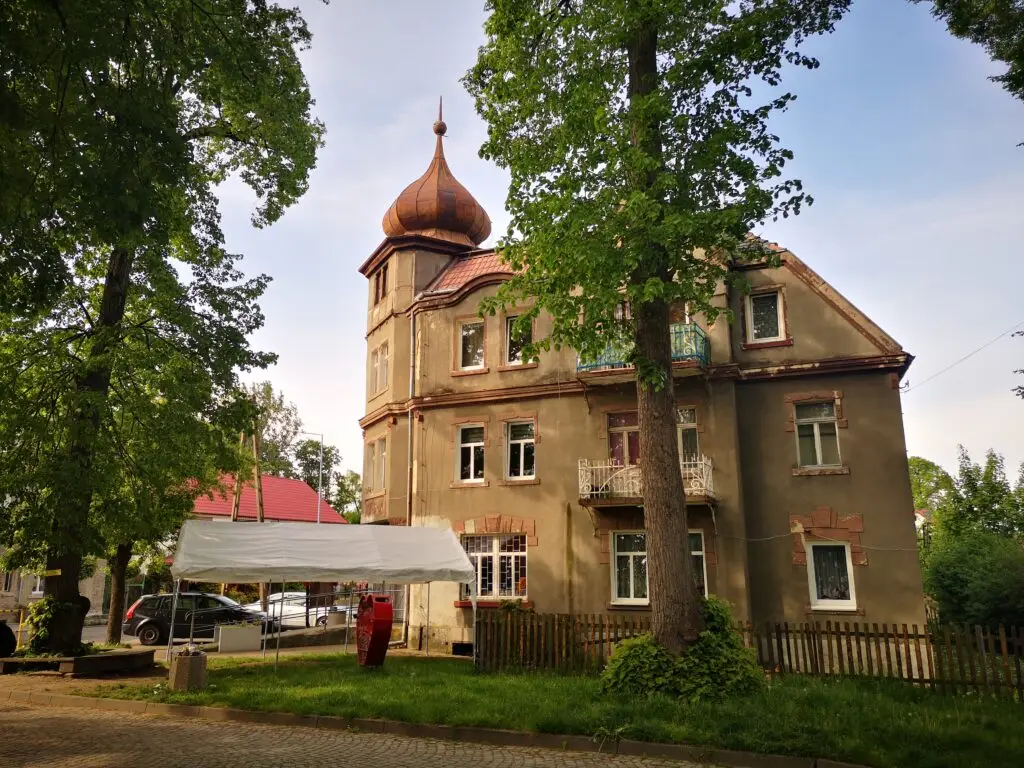
A former resort house in Opolno. Photo by Małgorzata Kulbaczewska-Figat.
Part of the village will turn into a hole in the ground. Another part will hover on its edge for the last few years of the mining operations. The destruction of the village is planned for the last stage of the mine’s existence. According to the mining plans, the deposit will be exhausted afterwards and the openpit will be filled with water. Perhaps this is why the residents, who refuse to introduce themselves to us, speak of this future with such regret.
When the historic houses of Turoszów were being destroyed, it was easier to believe that this was happening for higher purposes. The mine and the power plant were supposed to provide energy for many years to come. And now? Some of our interlocutors in Opolno do not believe in the year 2044. And even if mining were to end just then, is it really worth destroying this beautiful place for those twenty years? Wouldn’t it be better to invest in tourism, to attract visitors – no longer to the waters, but to the mountains?
Questions remain without answers. Officials responsible for preserving historical heritage used to fight for Opolno, but the mining law is stronger.
Only representatives of the mine could give an authoritative and certain answer here, but the mine’s owners is unlikely to change the decision of many years ago. Already on plans from the 1980s, Opolno-Zdrój lands within the future open pit. At the final stage of mining, but still.
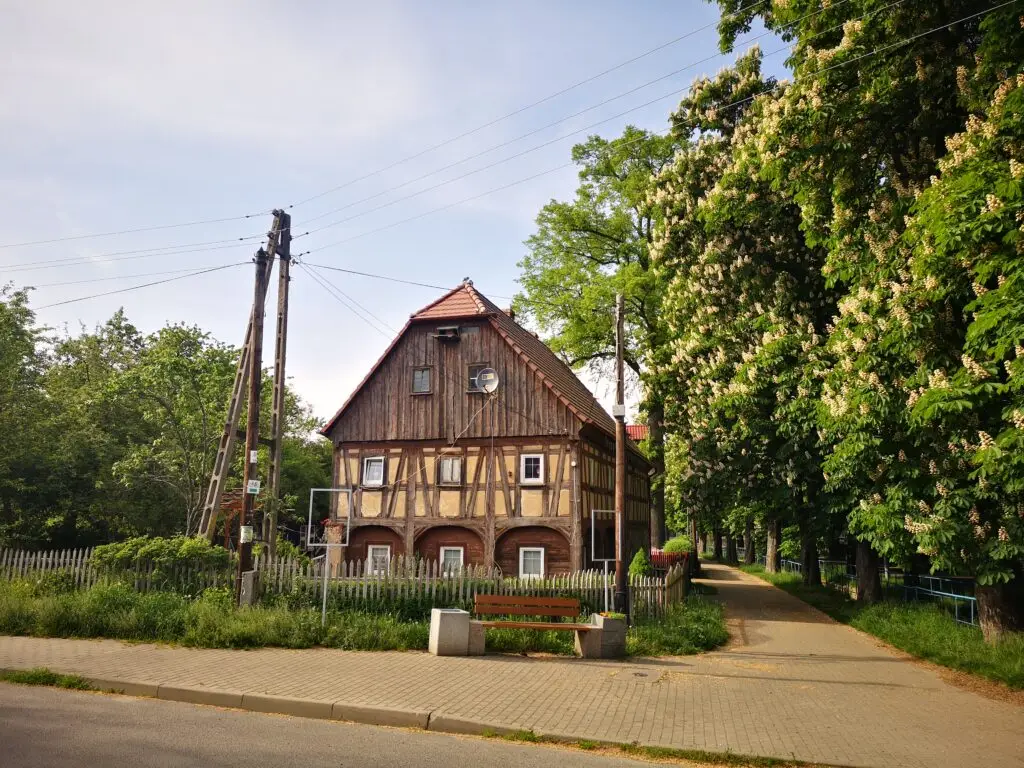
Opolno-Zdrój. Traditional Lusatian wooden architecture next to intensively green chestnut avenue. Photo by Małgorzata Kulbaczewska-Figat.
If mining lasts until 2044 and is carried out according to these plans, the next generation would see the chestnut avenue and spa houses only in photos and old postcards.
A collection of such reprinted cards was published in 2017 in Bogatynia. The publisher was the PGE Employee Volunteer Team. As another resident of Opolno-Zdrój, who does not want to reveal even her name, tells us, without the financial support of the mine no cultural events happen in the village. It was the mine that contributed to the plaques that mark the most important historical sites in Opolno. Without the mine’s support, there would be no reenactment events where the history of the resort is brought to life for a day.
Nothing in the Zgorzelec district happens without the mine’s participation.
***
If it weren’t for the mine, the village of wigancice, with rows of half-timbered houses, would still be standing, beautifully situated in a valley, along a single road leading to the Czech side.
As late as the 1970s, there were whole rows of houses characteristic of Lusatian architecture here. Some of them were built in the early 19th century, and were decorated with rich detailing, as in Baroque town houses. Not only historic houses, but the entire households and utility buildings survived by then [1].
But in the 1980s, Wigancice is regularly mentioned at meetings of the Bogatynia national council not because of its history and architecture. Residents complained about increasingly difficult living conditions in the shadow of the expanding mine and the heap which grew as the openpit became larger and larger. On October 18, 1981, one of the council members, Zbigniew Szatkowski complained to the council that no one was interested in the village’s problems. Meanwhile, the water in Wigancice was no longer drinkable, and the trees, located 500 meters from the heap, no longer bore fruit [2].
At successive sessions, councillor Irena Jablonska fights for a protection zone for Wigancice. She describes how the proximity of the mine has caused villagers’ health to decline. – The presence of carcinogenic compounds is exceeded in the waters tested in the village of Wigancice. Residents do not want to live in the area due to soil contamination, sulfur dioxide and dust. Their situation can only be resolved by approving and implementing a protection zone, the minutes read. The councilor notes that the mine has begun reclamation of the heap on the side of the village. – This is correct, but in the process a mass of fertilizer is being spread, and there is a danger that in heavy rains all this chemistry will run down into the village, as the land is lowering toward the village, it is recorded. The directors of the mine and the power plant were asked to help improve conditions in Wigancice, because “after all, the people living in the area are employees of both plants” [3].
But no investment was planned in Wigancice. Not even the repair of a dilapidated road (this is another thing that village representatives in the council complain about). The mine’s development plans stipulate that the entire area of the village will be covered by a heap. The future of the village was summed up with the words “technical extinction” [4]. In February 1987, Irena Jablonska is no longer asking for anything. – Living conditions are deteriorating day by day, she sums up. – Children are getting sick and animals are getting sick. The inconvenience of life in this village is very high. Residents are not fighting for anything, they just want to move out of this village [5].
The last families leave the wooden houses of Wigancice in the 1990s, and the mine pays for them to move into blocks of flats in Bogatynia [6]. Only the homestead erected in 1822, called the Blacksmith’s Homestead, still stands in Zgorzelec, entirely relocated thanks to the efforts of Elzbieta Lach-Gotthardt, another woman to whom the fate of Wigancice has not been indifferent. What remains of the village is a road, the foundations of individual buildings, the remains of the ruins. And a memorial plaque with photos and a diagram of the former Wigancice. Because in the end Wigancice did not disappear under the dust – the mine changed its plans. The heap did not reach where it was supposed to reach, as the earth could have started falling on the Czech side. This could cause trouble with a border Czech village of Višňová, which is not going to be liquidates.
The residents of Wigancice, together with their former neighbours of Višňová, hold regular meetings, rethink their childhood in the valley, and even dream of rebuilding what has been lost.
On the site of Vigancice today is a dense, lusciously green forest. It’s quiet all around, with large snails crawling onto the road. Nature has taken over for good the remnants of the last houses that can still be seen.
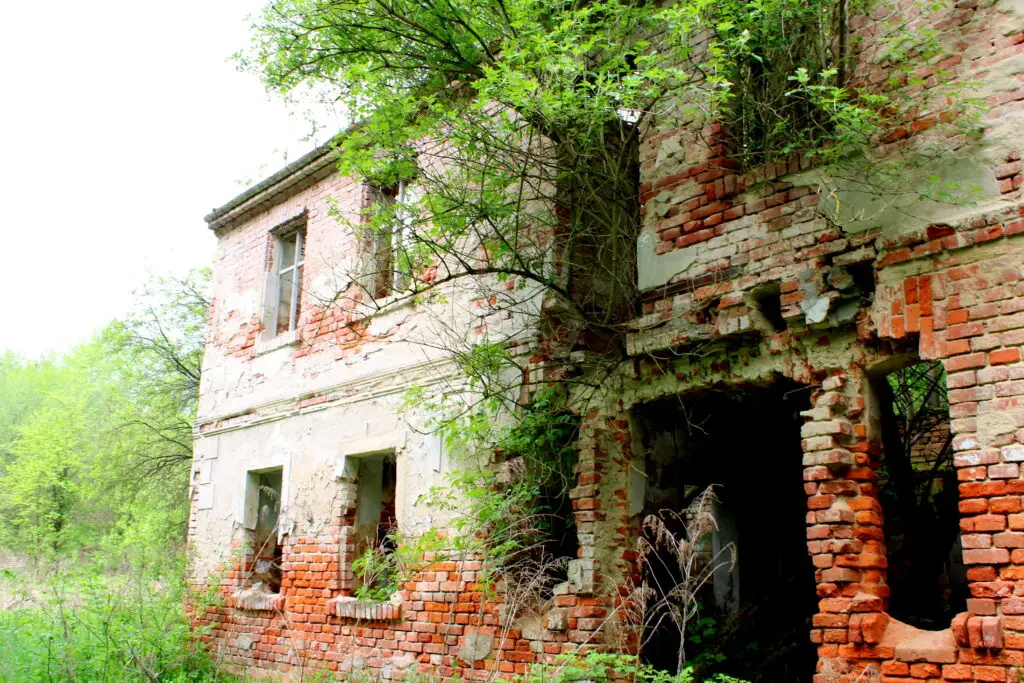
Trees grow between the walls, turning to the sun, because the roof of the building is no longer there.
I wouldn’t have imagined the village without old photos and a glimpse of the work of Marceli Sobanski, who designed the rebuilt Wigancice in the 2019/2020 academic year as part of his architecture degree at Poznan University of Technology. He proposed erecting one- and two-story houses again, with wooden construction, but covered with new cladding, along the main road, marking out bike paths and sidewalks, erecting a small textile factory from scratch, and opening a museum of the village’s rebirth, allowing visitors to compare what once was there with what has been rebuilt. Aesthetics and functionality, modernity and respect for tradition. Could the new Wigancice be a good place to live and attract visitors hungry for relaxation? Certainly!
But how can this project become a reality if the entire region collapses, if a just transition after the closure of major industrial plants will not happen after all? Enthusiasts of the Wigancice restoration project received some support from PGE. They also hoped to receive funds from the Just Transition Fund. But, as we have pointed out before, Zgorzelec district was excluded from this program, because a condition of eligibility was to close down mining operations before a given date.
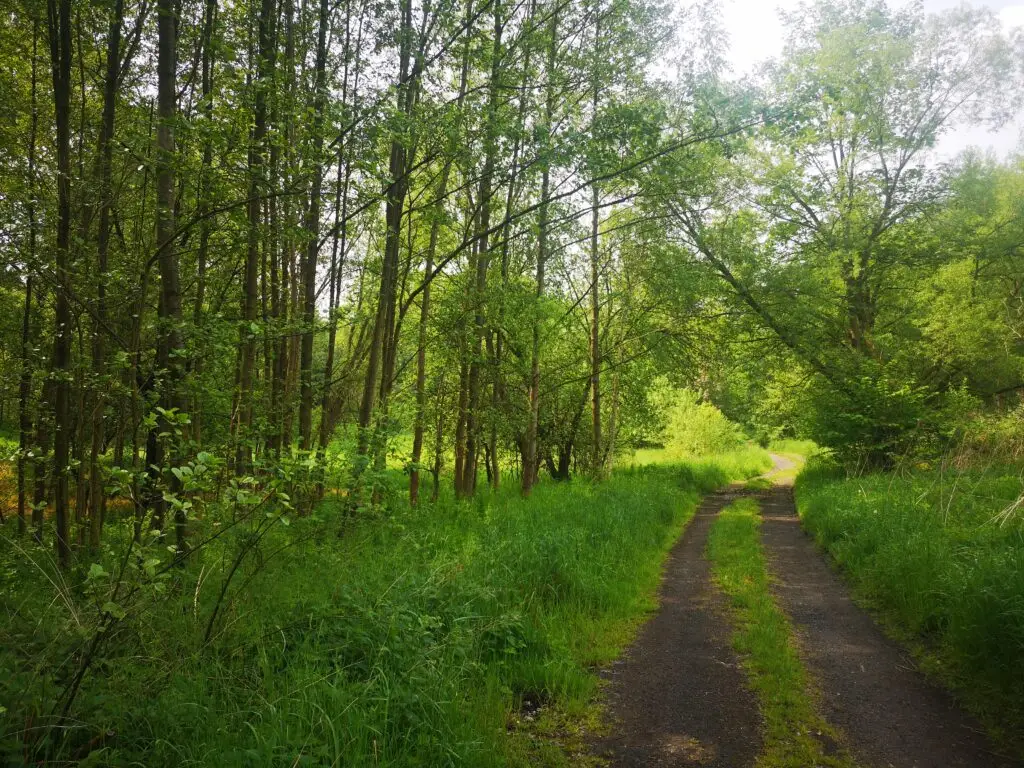
Here is where Wigancice once stood. Photo by Małgorzata Kulbaczewska-Figat.
***
If history had gone a slightly different way, the Hirschfelde openpit would not have remained within Poland’s borders for long and would never have become the Turow mine.
In the post-1945 time, when the borders of Poland still seemed uncertain, the government delegation sent to the UN session at the end of 1946 received a couple of guidelines to negociate Western and Southern border of the country. According to them, the whole city of Zgorzelec, pre-war German Gorlitz, including the railroad junction, should be annexed to Poland, but the so-called Zittau sack, or the areas south of Gorlitz/Zgorzelec, was described as a territory of no special significance. This assessment was not altered by the existence of the Hirschfelde openpit. Polish authorities believed the mine could not be properly used, as the associated power plant was located on the opposite bank of the Lusatian Neisse River, as was the headquarters of the mine’s authorities and all the workshops associated with it. When preparing the negotiating team for the Polish-Czechoslovak talks in February 1946, experts suggested to the Polish delegates that the Zittau sack, “undamaged, industrial and agricultural, poorly connected with the rest of Poland by communication could be exchanged for the Poprad region.” However, the Czechoslovak side torpedoed these talks, planned for the beginning of the year. When Czechoslovakia then changed its mind and put forward claims to the Zittau region, any exchange of land was blocked by the Soviet Union, which was vigilantly watching the actions of Prague and Warsaw [7].
Reichenau eventually became Bogatynia, and Bogatynia became a symbol of strenght of Socialist Poland. The mine and the power plant were the pride of that Poland. It was because of that great construction that “a region poorly connected to the rest of Poland by communication” was able to gain fundamental importance for the national energy industry.
However, the chapter related to coal power is inevitably heading towards closure – this cannot be denied – even if at the same time it is impossible to deny the mine, here and now, its importance for national energy security, which politicians constantly talk about.
Let’s open a new chapter. Let’s organize a pumped storage power plant on the basis of the reservoirs that will be created on the site of the open pit, and using the heap,” engineers Leszek Opyrchal and Aleksandra Bak proposed in 2022. This is namely the project about which the Greenpeace representative spoke with such enthusiasm. A new power plant could give new jobs.
When I look at this project, I want to believe that – despite all the missed opportunities – Bogatynia can still be a symbol of transformation in a good sense.
In addition to projects for the development of the former mining site, there must also be plans for the people. This thread was not taken up by mining engineers or renewable energy specialists. It must be discussed by the people themselves and local and central government representatives, from all three countries.
Perhaps it is not too late.
The report was finished in September 2023, before the elections in Poland which brought about the government change. The Civic Platform, which came to power afterwards, is more favourable towards renewable energy than towards preserving the coal mining as long as it is possible. Nevertheless, one thing does not change – no plan of just transition for Bogatynia and Zgorzelec region has been offered.
[1] M. Lis, Budownictwo ludowe Dolnego Śląska. Okolice Bogatyni, Biuro Studiów i Dokumentacji Zabytków we Wrocławiu-Wojewódzki Konserwator Zabytków w Jeleniej Górze, Wrocław 1977, passim.
[2] Archiwum Państwowe we Wrocławiu , coll. 83 (Rada Narodowa Miasta i Gminy i Urząd Miasta i Gminy w Bogatyni), ref. 1/2, p. 64.
[3] Archiwum Państwowe we Wrocławiu, Oddział w Bolesławcu, coll. 83 (Rada Narodowa Miasta i Gminy i Urząd Miasta i Gminy w Bogatyni), ref.1/6.
[4] Archiwum Państwowe we Wrocławiu, Oddział w Bolesławcu, coll. 83 (Rada Narodowa Miasta i Gminy i Urząd Miasta i Gminy w Bogatyni), ref. 1/6, p. 13.
[5] Archiwum Państwowe we Wrocławiu, Oddział w Bolesławcu, coll. 83 (Rada Narodowa Miasta i Gminy i Urząd Miasta i Gminy w Bogatyni), ref. 1/4, p. 72.
[6] A. Szpotański, Kotlina Turoszowska, p. 380; https://zgorzelec.naszemiasto.pl/wigancice-zytawskie-zniknely-z-mapy-w-1999-r-teraz-znow/ar/c7-8785319
[7] P. Pałys, Kwestia żytawska 1945-1949. Na skrzyżowaniu interesów czeskich, niemieckich, rosyjskich, serbołużyckich i polskich, Państwowy Instytut Naukowy – Instytut Śląski w Opolu, Opole 2017, p. 122-123.

This report was written with the support of Journalismfund.
Piotr Lewandowski, Iwona Lewandowska and Czesław Kulesza co-operated in the preparation of this report.
Subscribe to Cross-border Talks’ YouTube channel! Follow the project’s Facebook and Twitter page! And here are the podcast’s Telegram channel and its Substack newsletter!
Like our work? Donate to Cross-Border Talks or buy us a coffee!
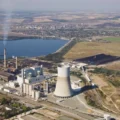

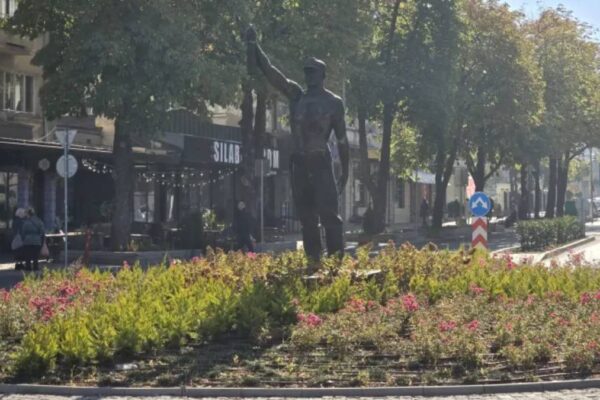

![Jiu Valley: is there a life after coal? [GALLERY]](https://www.foundintransition.eu/wp-content/uploads/2024/01/wieza-wyciagowa-i-chmury-scaled-1200x675-1-600x400.jpg)
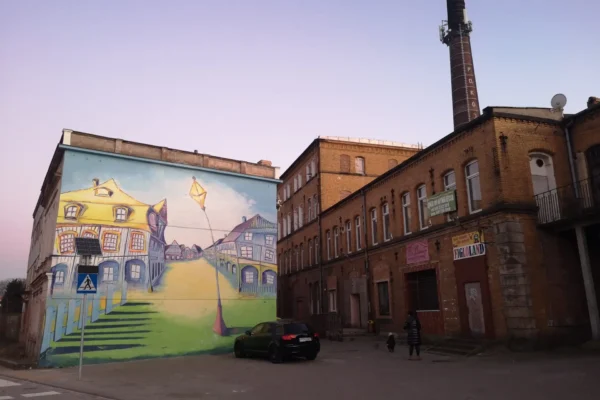
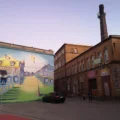
![There is no just transition without trust and social capital [interview]](https://www.foundintransition.eu/wp-content/uploads/2024/01/Paroseni-scaled-1200x675-1-600x400.jpg)
![There is no just transition without trust and social capital [interview]](https://www.foundintransition.eu/wp-content/uploads/2024/01/Paroseni-scaled-1200x675-1-120x120.jpg)
1 Comment
The Turów case comes back to court - Cross-border Talks
21 March 2024[…] the Turów deposit (the best quality parts were, of course, exploited long ago), and which requires destroying one more village and paying compensations to the local people, is considered […]